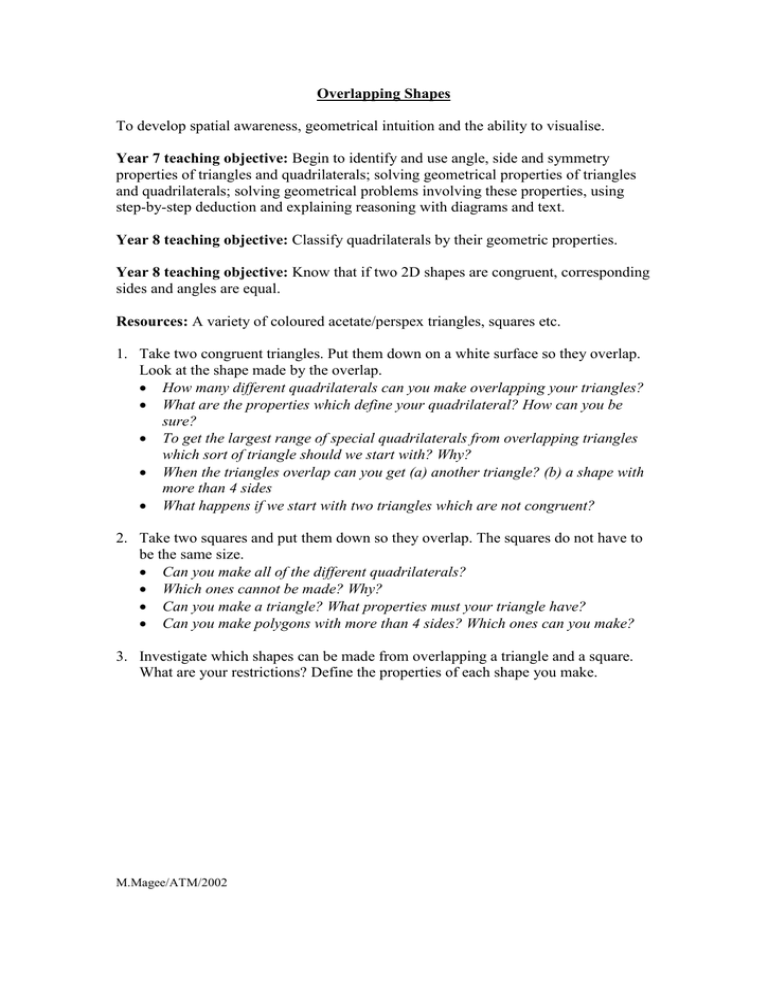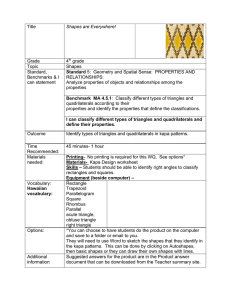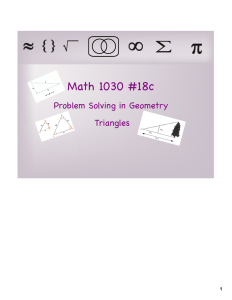Overlapping Shapes Year 7 teaching objective:
advertisement

Overlapping Shapes To develop spatial awareness, geometrical intuition and the ability to visualise. Year 7 teaching objective: Begin to identify and use angle, side and symmetry properties of triangles and quadrilaterals; solving geometrical properties of triangles and quadrilaterals; solving geometrical problems involving these properties, using step-by-step deduction and explaining reasoning with diagrams and text. Year 8 teaching objective: Classify quadrilaterals by their geometric properties. Year 8 teaching objective: Know that if two 2D shapes are congruent, corresponding sides and angles are equal. Resources: A variety of coloured acetate/perspex triangles, squares etc. 1. Take two congruent triangles. Put them down on a white surface so they overlap. Look at the shape made by the overlap. How many different quadrilaterals can you make overlapping your triangles? What are the properties which define your quadrilateral? How can you be sure? To get the largest range of special quadrilaterals from overlapping triangles which sort of triangle should we start with? Why? When the triangles overlap can you get (a) another triangle? (b) a shape with more than 4 sides What happens if we start with two triangles which are not congruent? 2. Take two squares and put them down so they overlap. The squares do not have to be the same size. Can you make all of the different quadrilaterals? Which ones cannot be made? Why? Can you make a triangle? What properties must your triangle have? Can you make polygons with more than 4 sides? Which ones can you make? 3. Investigate which shapes can be made from overlapping a triangle and a square. What are your restrictions? Define the properties of each shape you make. M.Magee/ATM/2002




